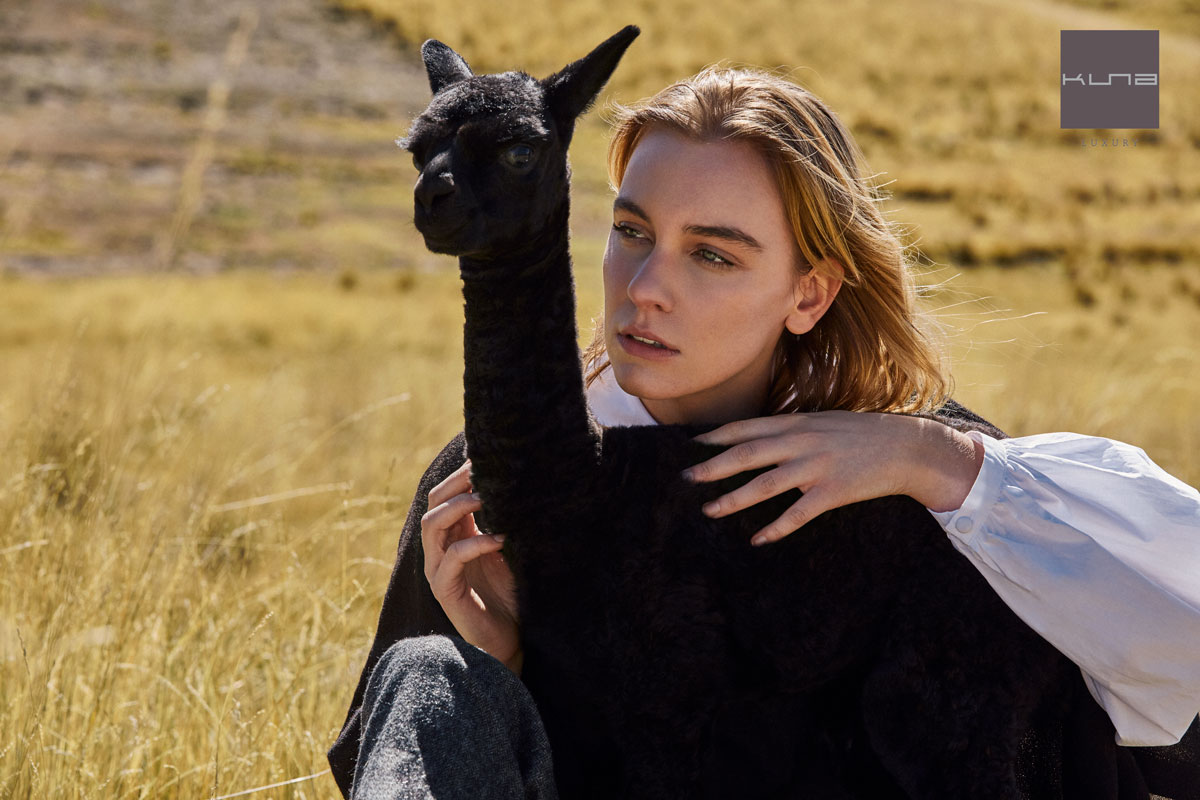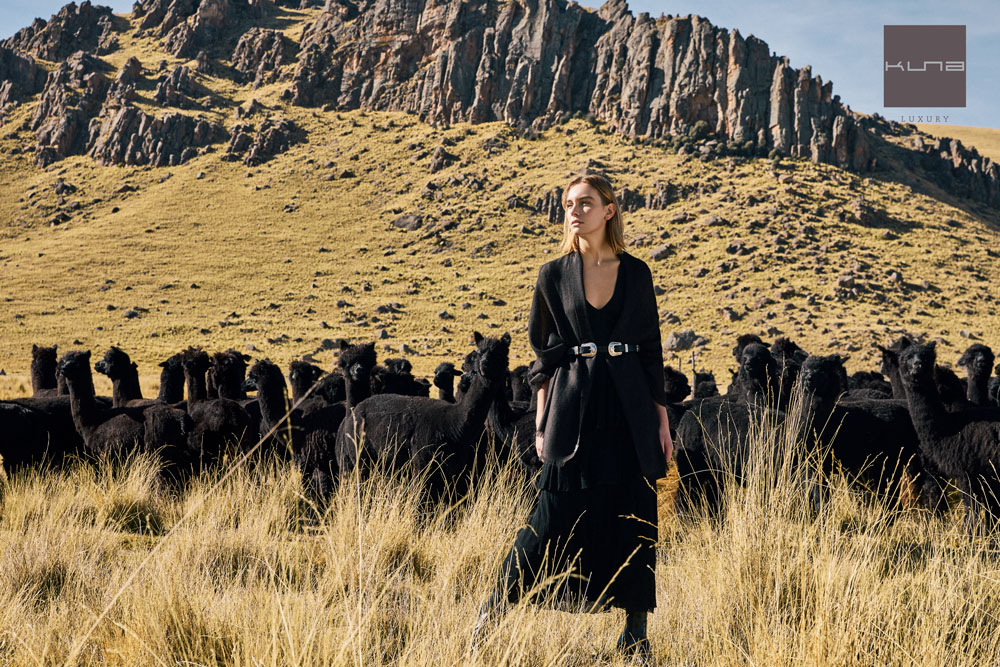THE NEW BLACK ALPAKA COLLECTION - A WONDERFUL RESCUE

"Fashion is a world of color, dynamic, full of different tastes and trends. In this world, there is a color that is in every wardrobe, never goes out of fashion, and is always elegant. People in the textile industry know there are many types of black clothing, most of them chemically dyed. Natural black does not need chemicals. It is a different black, hard to find, and unique."
For 1000 years, in the remote mountains of the Andes, in the south of Peru, the native ancestral shepherds, descendants of the Incas, raised with enormous challenges about 5 million alpacas in a vast territory. Until 1950 most alpacas were of different colors, and only a quarter of them were white. However, the international market started to demand more white colors so they could be dyed, and the natural colors started to be in less demand. Since then black color has been neglected, and today only represents 1% of alpacas raised in Peru.
A few years ago KUNA and Pacomarca, the genetic facility for scientific research on alpacas, decided to start the rescue of alpacas of pure black color.
With the program, YANAPACO (Black Alpaca in Quechua), based on the progress of their genetic improvement program achieved over the last 20 years, and with the largest database that exists about alpacas in the world, managed to acquire as many black animals as possible to raise, study and reproduce them.
Today this project has more than 700 animals that are the base to develop scientific improvements never done before, without hurting the animals.
This is the biggest herd of black alpacas in the country and perhaps even worldwide.
In the future, the idea is to share with the shepherds in the Andes, the black fiber that would be a better source of income for these breeders due to the extraordinary color and the benefits for the environment.


Comments
Leave A Reply
Your email address will not be published.